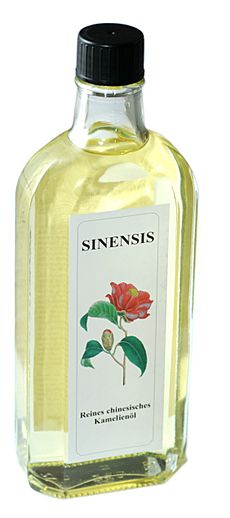Tea seed oil facts for kids
Tea seed oil (also known as camellia oil, camellia seed oil, teanut oil) is an edible plant oil. It is obtained from the seeds of Camellia oleifera.
Camellia sasanqua is also given as a source of 'tea seed oil.
Contents
Description
The genus Camellia includes several commercially important species - Camellia oleifera is grown mainly in China for vegetable oil. The oil is known as 'camellia oil', 'tea seed oil', or 'camellia seed oil'. As of 2016 4,000,000 hectares (9,900,000 acres) of oleifera forest centered on the Yangtze river basin in Hunan, Jiangxi, and Guangxi produces 0.26 million tons of oil.
Wild Camellia oleifera contains ~47% oil, whilst cultivated varieties have shown oil content from 42 to 53%. Oil analysis of cultivated varieties showed : ~76-82% oleic acid; 5-11% linoleic acid; 7.5-10% palmitic acid; 1.5-3% stearic acid - the ratios are similar to that found in wild oleifera. The composition is similar to that of Olive oil. Another analysis of several cultivars found : 82-84% unsaturated acids of which 68-77% oleic acid; and 7-14% polyunsaturated acids.
Uses
With its high smoke point of 252 °C (486 °F), tea seed oil is the main cooking oil in some of the southern provinces of People's Republic of China, such as Hunan, especially in mountainous regions; roughly one-seventh of the country's population.
The oil has also been used in Chinese traditional medicine - here it has been used as a dietary supplement for the digestive system, as well as to manage cholesterol, as well as strengthen the immune system. It was also used topically as baby lotion and for burn injuries.
Tea seed oil is commonly used to protect carbon steel cooking knives from rust.
Cautions
Tea seed oil should not be mistaken for tea tree oil (melaleuca oil), an inedible essential oil extracted from the leaves of the paperbark, Melaleuca alternifolia, which is used for medicinal purposes.
See also
 In Spanish: Aceite de Camelia para niños
In Spanish: Aceite de Camelia para niños


